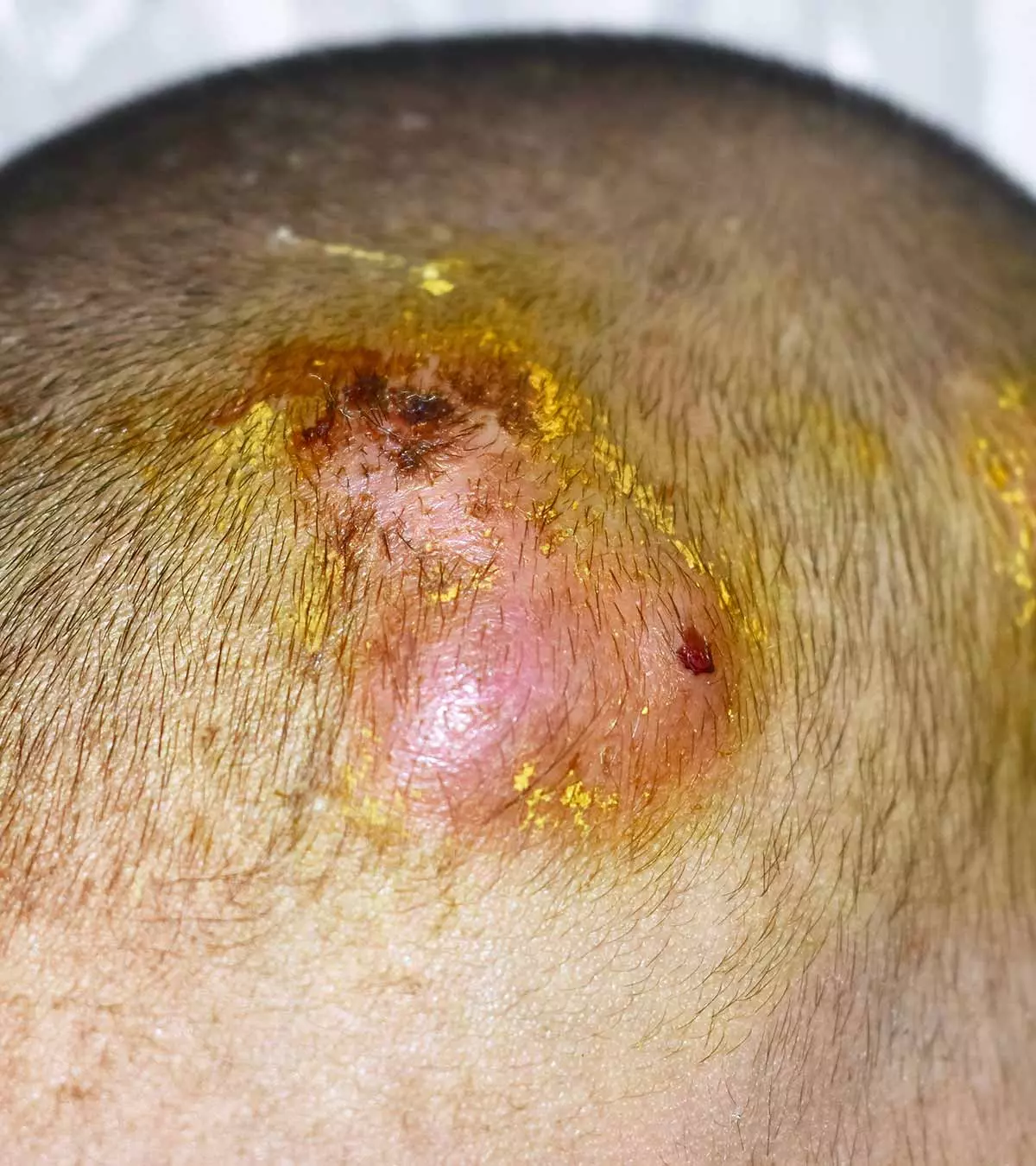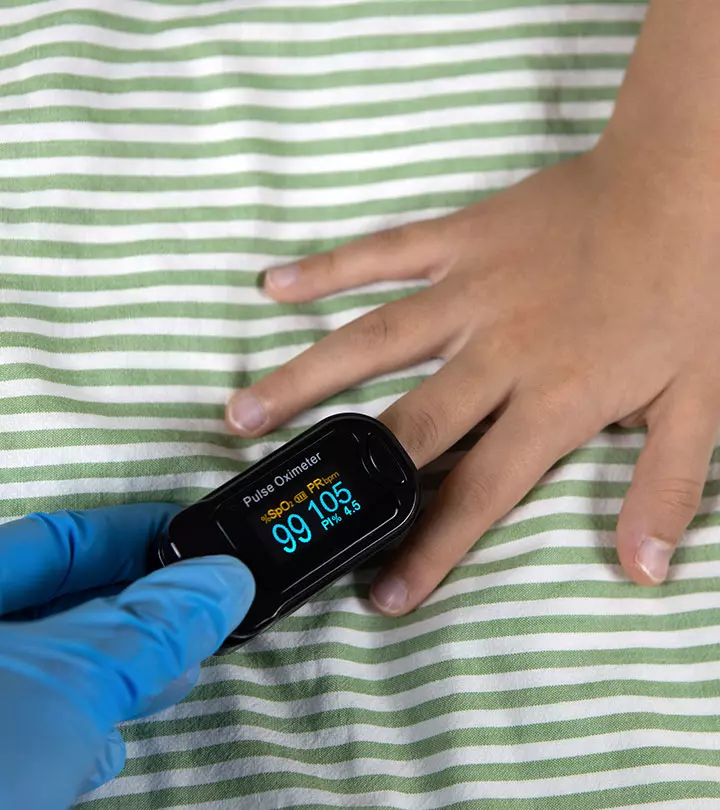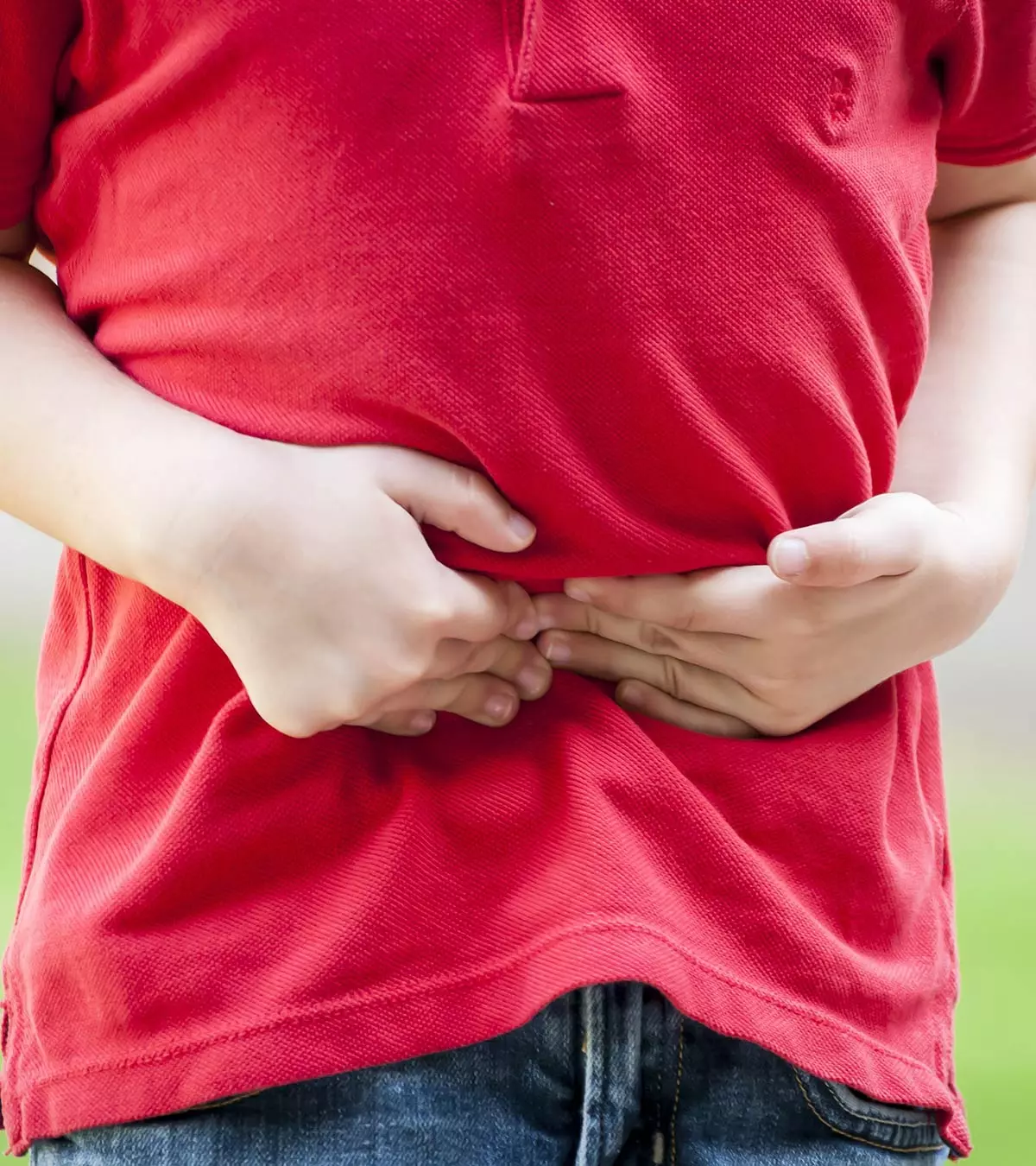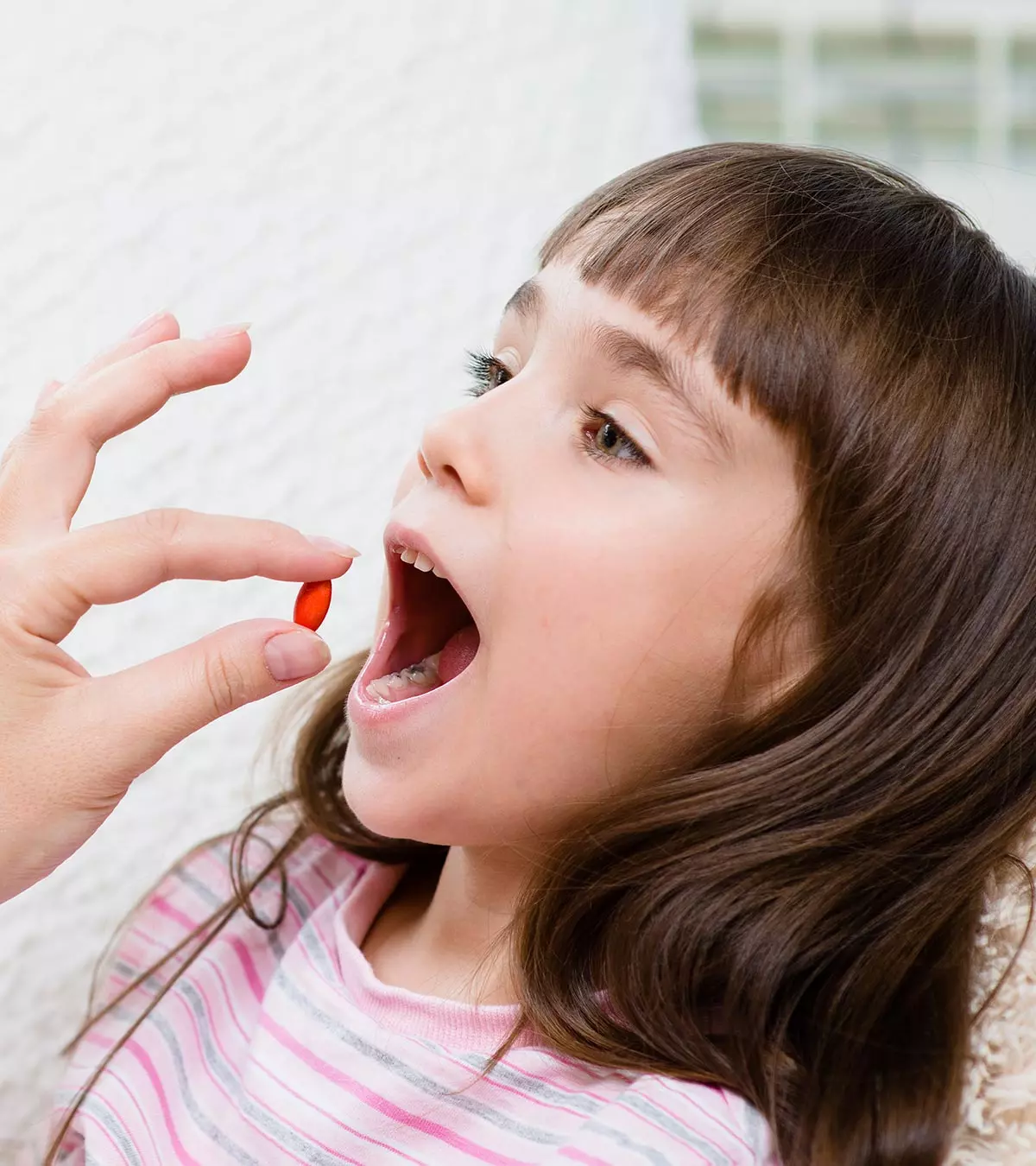
Image: Shutterstock
Seeing your child in pain can make you anxious. Hence, it is necessary to know some safe pain management options for relief and peace of mind. And the easiest way to get relief from the pain seems to be painkillers. But are painkillers for kids safe? We will help you answer it. Read on to know about the advantages and disadvantages of painkillers and whether or not they are safe to be administered to children.
Key Pointers
- Children should not take pain relievers without a doctor’s prescription.
- Painkillers alter pain perception, but do not address the root cause of the pain.
- Overuse of pain relievers can lead to severe medical complications or intoxication.
- Painkillers may be required for children experiencing intense pain from surgical procedures, fractures, or body aches.
- Non-pharmaceutical alternatives, like topical ointments, can be utilized for minor discomfort.
- Paracetamol, ibuprofen, and aspirin are commonly used painkillers that are safe when taken in the recommended dosage.
Are Painkillers Safe For Children?
Painkillers do not treat the cause of the pain, but they only alter the way your child’s body reacts to it
. Some painkillers are safe for children, but prolonged use can cause serious medical problems (1) or intoxication when used in. higher doses. You need to administer the prescribed dose for the shortest possible period.
Therefore, it is not ideal to give painkillers to kids without a prescription from their doctor.
When Can You Give Painkillers To Children?
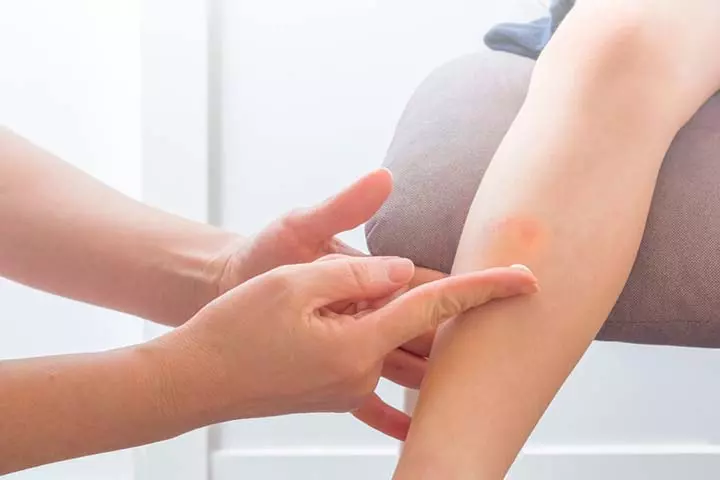
If your child is suffering from mild pain from an injury caused while playing or muscle sprain, try non-pharmaceutical methods such as applying a soothing ointment, and distracting and comforting the child to divert them from the pain. It may be difficult to watch your child in pain, but using painkillers for mild pain may not be the right thing to do.
However, if your child is experiencing severe pain from fractures, has undergone surgery, or has severe body aches, then giving painkillers may be crucial to help the child sleep and heal better.
Which Painkillers Are Suitable For Children?
Painkillers are classified into two categories, namely non-opioid/over-the-counter analgesics and opioid/prescription analgesics.
Over-the-counter Painkillers/ Non-opioid Analgesics
These drugs do not need a doctor’s prescription. But it is always advisable to consult a doctor before using them. The following are some over-the-counter painkillers which may be given to children, if necessary.
1. Paracetamol (acetaminophen)
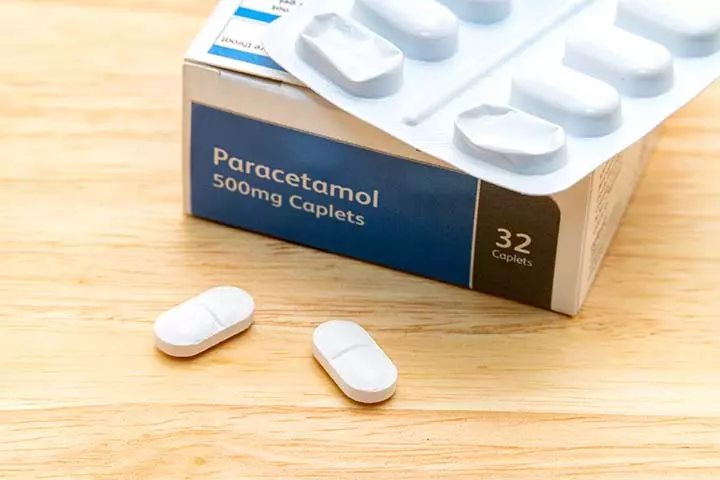
Paracetamol should be given to babies under the age of one month only after doctor consultation (2). Also, never give more than the prescribed dosage. After thorough medical guidance, old children can take this drug in liquid, tablet, capsule, or chewable form.
Paracetamol for children is most commonly used, generally safe, and has few side effects. However, overdosing can cause liver toxicity. So, special care should be taken while administering this drug to children who are malnourished and on cytochrome P 450 enzyme-inducing drugs (3).
 Point to consider
Point to consider2. Ibuprofen
Ibuprofen (Motrin, Avdil) is a nonsteroidal anti-inflammatory drug (NSAID), and is considered as a safe painkiller for children. Advil or Motrin for children usually helps to decrease swelling, relieve pain, and reduce fever in children older than three months or those who weigh 5kg or more.
Ibuprofen for kids is not suitable for children who have asthma, kidney, or liver disease (4). So, always consult your doctor before giving ibuprofen to your child.
Although this is an effective painkiller, it might have some side-effects such as
- Stomach pain
- Indigestion or heartburn
- Nausea (5)
- Although, rare, more serious side effects such as black or bloody stools, blood in urine or serious allergic reaction, might occur. Consult your physician or ER immediately if any of these happen.
Ibuprofen is the only NSAID approved for use in children as young as six months and is used prominently for pain management. As the below graph depicts, it is also one of the most widely studied and used NSAIDs in children to manage acute pain, especially for fractures and other musculoskeletal injuries.

Nonsteroidal anti-inflammatory drug publications were studied
Source: Pain Management in Children: NSAID Use in the Perioperative and Emergency Department Settings; Pediatric Drugs/Springer Quick fact
Quick fact3. Aspirin
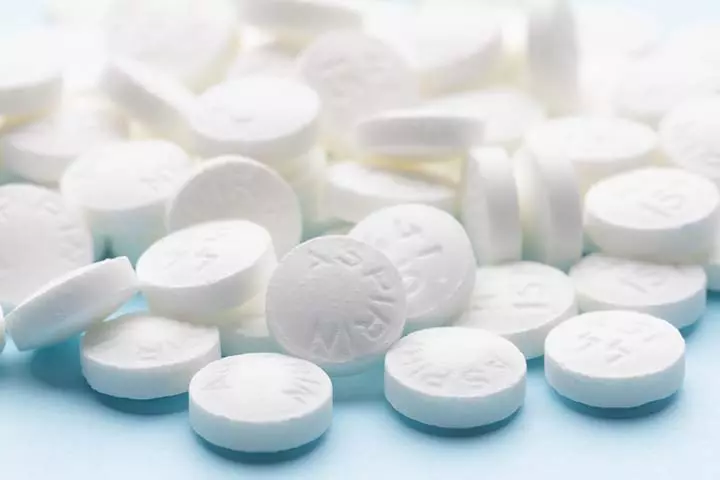
Aspirin or salicylate is a nonsteroidal anti-inflammatory drug (NSAID) commonly used as a fever reducer and relieves mild to moderate pain in adults. However this medication is rarely prescribed in children under the age of 16 years because of its potential risk for developing a serious condition, known as Reye’s syndrome, where the liver and brain suffer damage (6).
If your child’s doctor has prescribed aspirin, then these could be some of the side-effects.
- Mild indigestion
- Bleeding more than normal
Some serious side-effects are:
- Red blisters, and peeling of skin
- Yellow skin or whites of eyes turn yellow
- Painful joints in hands and feet
- Swollen hands
- Abdominal pain/ nausea
- Allergic reactions
Take your child to the doctor if you noticed any of these side-effects (6)
Prescription Or Opioid Analgesics
These pain-relieving medications are only available through a doctor’s prescription. The doctor will prescribe them in situations where your child is experiencing severe and chronic pain.
1. Morphine
Morphine is an effective pain reliever and often used in children who have undergone surgery. It is considered safe for children and newborns. However, the US Food and Drug Administration (US FDA) specifies that the safety and effectiveness of morphine injection and oral solution in pediatric patients below the age of 18 years have not been established (7) (8). So, your child’s doctor might prescribe morphine when other treatment approaches fail to provide relief.
When used as a painkiller, the chances of getting addicted are low; however, your child’s body can show dependency, and display withdrawal symptoms. Doctors usually prescribe a regime where the drug dosage is reduced gradually.
Even though safe, morphine has a few side effects such as:
- Fainting
- Sleepiness
- Problems in breathing (9)
Morphine is also contraindicated if your child is suffering from
- Respiratory depressioniA condition where lungs fail to carry out the gaseous exchange process efficiently
- Acute or severe bronchial asthmaiA chronic respiratory condition where the airways in the lungs become inflamed and narrow, causing difficulty breathing
- gastrointestinal obstructioniA blockage in the intestines that keeps food, liquid, or other contents from passing through it
- hypersensitivity to morphine (7)
It must be noted that morphine should be used only under doctor’s prescription, never as a self-medication.
2. Codeine
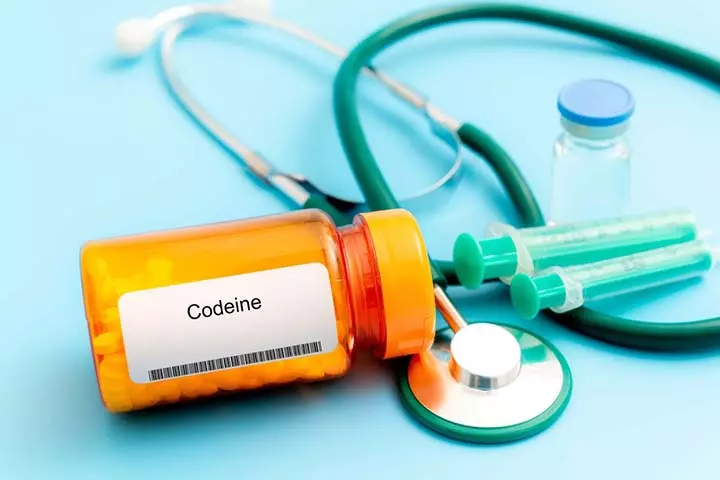
The European Medicine Agency’s Pharmacovigilance Risk Assessment Committee (PRAC) warns that codeine should only be used for acute moderate pain in children, who are above the age of 12 years. The USFDA also warns that medications containing codeine should not be used for children below the age of 12. It also warns that codeine is not recommended to use for children between 12 and 18 years who are obese or have obstructive sleep apneaiA sleep-related disorder in which a person repeatedly pauses breathing during sleep and severe lung disease (10).
Also, codeine is contraindicated in children who had surgery for the removal of tonsilsiSmall oval-shaped tissues located at the back of the throat that prevent the entry of harmful microorganisms or adenoidsiMass of soft tissues found behind the nasal cavity that help seizes entry of microbes through the nose or mouth , as it can cause respiratory problems (11).
The side-effects of codeine include:
- Drowsiness
- Light-headedness
- Dizziness
- Sedation
- Shortness of breath
- Nausea
- Vomiting
- Sweating
- Constipation (12)
It is best to consult your child’s doctor before using over-the-counter painkillers. In addition, parents should observe some safety precautions if their child is administered painkillers.
What Can Parents Do When They Can’t Find OTC Medication For Their Children?
When parents can’t find over-the-counter medication, they should consider the following to ensure their child’s comfort and safety (15) (16):
- Explore generic versions or alternative brands of the medication.
- Try different formulations, such as chewable tablets or suppositories for children over two years.
- When substituting your usual children’s medication with an infant version, be aware of the differing concentrations, as dosages may vary.
- Avoid using multi-symptom cold medications and adult versions without consulting a doctor.
Non-medication options, such as cool compresses, lukewarm baths, and hydration, are also recommended for managing mild fever and discomfort. Always consult a healthcare professional when in doubt.
Safety Tips For Giving Painkillers To Children
Keep the painkiller use effective and avoid overdosing by following these tips.
- Always check the labels of the product to know if you are using the right strength and dosage as per your child’s weight and age.
- Painkillers are sold under different brand names. Each product has different strengths and may have other added compounds. Read the label and clarify any doubts with your pharmacist.
- Do not administer the painkiller for more than 48 hours unless advised by a doctor.
- Never double or reduce the dosage without consulting your doctor.
- If you missed a dose, then continue with your original schedule. Do not double the dose or provide two doses at once since it can lead to poisoning.
- Do not take the painkiller tablet out of its foil wrapping until you are ready to give it to your child.
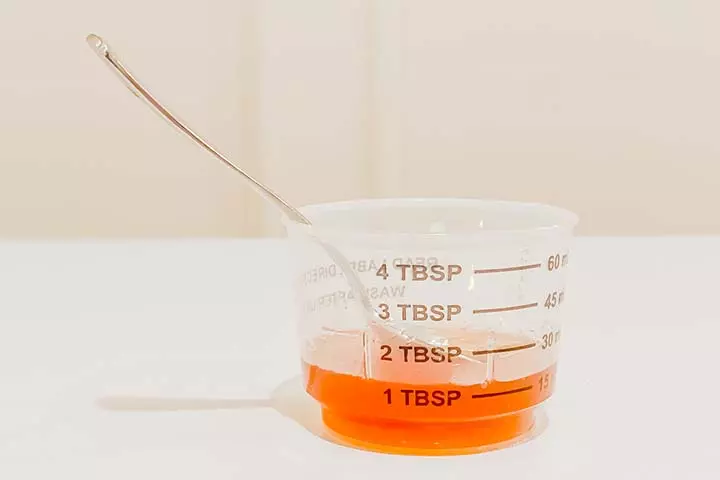
- If the painkiller is a liquid medication or syrup, then always use the measuring device provided with the medicine.
- Make sure the bottles of the medicine are closed tight and placed out of the reach of a child.
- Consult your child’s pediatrician before introducing any new pain relief medication, especially if your child is on some other medications or has pre-existing health conditions.
Frequently Asked Questions
1. Are there any natural painkiller remedies for children?
There exist several herbal remedies, such as St John’s Wort, ginger, turmeric, and white willow bark, which are proven to help with different pains and inflammations. In addition, omega-3 fatty acids, capsaicin, and resveratrol are also known natural remedies for pain relief. However, these researches do not suggest their uses and benefits for children, thus requiring medical guidance on their application to children (17) (18).
2. How often can children take painkillers?
Children can take age-appropriate doses of paracetamol at four- or six-hour intervals, depending on the severity of their symptoms. However, little information exists on the use of other painkillers for children, requiring a doctor to determine the dosage and its frequency to avoid allergic effects, overdose, or other complications (19).
3. What should I do if my child experiences side effects from painkillers?
If your child experiences side effects like nausea, dizziness, or allergic reactions after taking a painkiller, stop using the medication immediately and contact your pediatrician. Taking prompt action can ensure appropriate care and avoid further complications.
4. Is there a difference between painkillers for adults and children?
Painkillers for children are lower in dosage and medical concentration in comparison to adult painkillers. The medication is prescribed based on the age, height, and weight of the child. In addition, there exists insufficient evidence on the safety of adult-suited painkillers for children (20).
The use of painkillers for kids should be done wisely and only under the supervision of a healthcare professional or pediatrician. In case of mild pain or injury, it is advised that you try soothing the pain with the help of topical treatment, such as using a topical ointment or a massage to the affected area. If the pain becomes unbearable or worsens, do not give the child any over-the-counter pain medications. Instead, consult a doctor who may suggest safe medicines based on the underlying cause.
Infographic: Precautions When Giving Painkillers To Children
Painkiller medicines are better given to children only under medical supervision. These medications may have side effects, and it is crucial to avoid dosing mistakes. The infographic below chalks out precautionary measures to follow when giving painkillers to children.

Illustration: Momjunction Design Team
This post is for informational purposes only and is not a replacement for a doctor’s consultation. Do not use any medication without talking to your doctor.
Illustration: Which Painkillers Are Safe For Children?
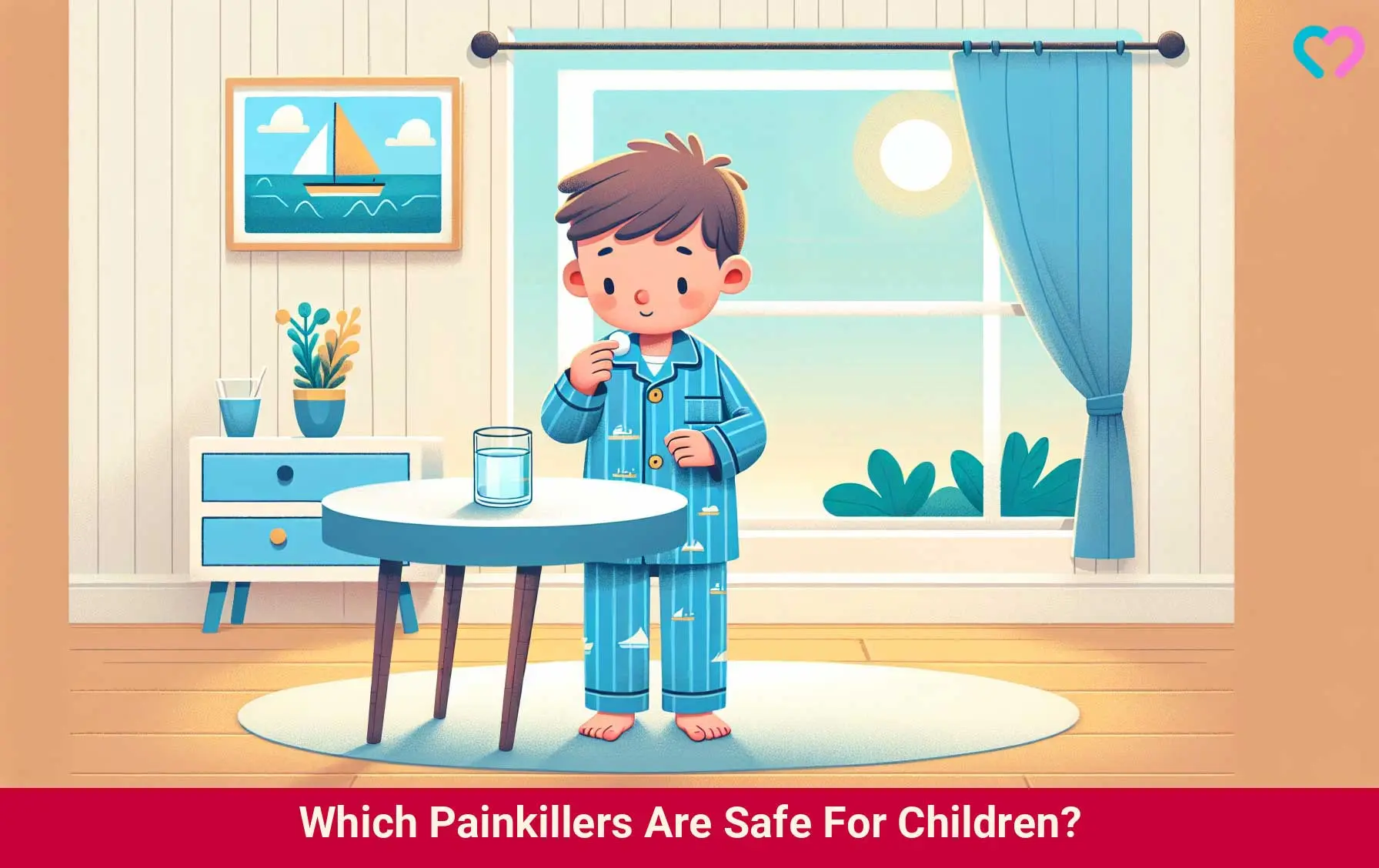
Image: Dall·E/MomJunction Design Team
References
1. Pain Management (Acute)- children; Better Health Channel; Victoria State Government
2. Children’s medicine; Health direct
3. M Riordan,G Rylance, K Berry; Poisoning in children 2: Painkillers; British Medical Journals
4. Pain relief for children- paracetamol and ibuprofen; The Royal Children’s Hospital Melbourne
5. Ibuprofen for children; National Health System
6. Aspirin for pain relief; National Health System
7. Prescribing Information- Morphine Sulfate oral solution; US Food and Drug Administration
8. Prescribing Information- Morphine Injection; US Food and Drug Administration
9. Morphine for Pain Relief in Children; The Hospital for Sick Children
10. FDA Drug Safety Communication: FDA restricts use of prescription codeine pain and cough medicines and tramadol pain medicines in children; recommends against use in breastfeeding women; The US Food and Drug Administration
11. Restrictions on use of codeine for pain relief in children – CMDh endorses PRAC recommendation; European Medicines Agency
12. Prescribing Information- Codeine Sulfate oral solution; US Food and Drug Administration
13. Managing pain in children aged under 12 years; The Best Practice Advocacy Centre New Zealand
14. https://pch.health.wa.gov.au/For-health-professionals/Emergency-Department-Guidelines/Fentanyl-Intranasal; Government of Western Australia Child and Adolescent Health Service
15. Managing pain in children aged under 12 years; The Best Practice Advocacy Centre New Zealand
17. Behdad Jahromi et al.; (2021);Herbal Medicine for Pain Management: Efficacy and Drug Interactions; NCBI
18. Maroon et al; (2010);Natural anti-inflammatory agents for pain relief;; NCBI
19. How and when to give paracetamol for children; NHS
20. With pediatric medications in short supply, is it safe to split adult medications in half for children?; Northeastern University
Community Experiences
Join the conversation and become a part of our nurturing community! Share your stories, experiences, and insights to connect with fellow parents.
Read full bio of Dr. Nikolina Zdraveska
Read full bio of shreeja pillai
Read full bio of Swati Patwal
Read full bio of Dr. Joyani Das








